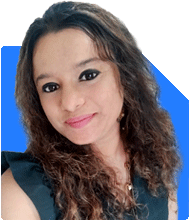Ramalingam Kalirajan |10908 Answers |Ask -Follow
Mutual Funds, Financial Planning Expert - Answered on Jul 10, 2024
He has an MBA in finance from the University of Madras and is a certified financial planner.
He is the director and chief financial planner at Holistic Investment, a Chennai-based firm that offers financial planning and wealth management advice.... more

Hello My name is Anuj I am 33 year old married One boy child-4yrs old Monthly income 90K Having 50 lkh in equity 5 lakh mutual fund Saving account-3 Lakh Want to retire at 45 yrs with 90k Please suggest
Current Financial Status
Age: 33 years
Monthly income: Rs 90,000
Equity: Rs 50 lakhs
Mutual funds: Rs 5 lakhs
Savings account: Rs 3 lakhs
One boy child, 4 years old
Retirement goal: Retire at 45 with a monthly income of Rs 90,000
Financial Goals
Retire at 45 with a monthly income of Rs 90,000.
Secure child’s education and future.
Analyzing Your Investments
Equity Investments
Equity of Rs 50 lakhs shows good growth potential.
Diversify equity portfolio to mitigate risks and enhance returns.
Mutual Funds
Rs 5 lakhs in mutual funds is a solid start.
Increase SIPs to build a substantial corpus over time.
Consider adding large-cap, mid-cap, and multi-cap funds for diversification.
Savings Account
Rs 3 lakhs in a savings account is good for liquidity but offers low returns.
Maintain a portion for emergencies and move the rest to higher-yield investments.
Planning for Early Retirement
Retirement Corpus Calculation
To retire at 45 with Rs 90,000 monthly income, a substantial corpus is required.
Factor in inflation, expected rate of return, and life expectancy.
Power of Compounding
Start investing early to leverage the power of compounding.
Regular SIPs in mutual funds will grow your investments significantly over time.
Diversification
Diversify across different asset classes to balance risk and return.
Include equity, debt, and hybrid funds in your portfolio.
Investment Strategy
Increasing SIPs
Increase SIPs in mutual funds to achieve your retirement goal.
Allocate more towards equity funds for higher returns.
Equity and Mutual Funds
Maintain a diversified equity portfolio to minimize risks.
Include large-cap, mid-cap, small-cap, and sector-specific funds.
Regularly review and rebalance your portfolio to stay aligned with your goals.
Insurance and ULIPs
Review existing insurance policies.
Consider term insurance for adequate life cover.
Evaluate ULIP performance and consider switching to mutual funds if returns are unsatisfactory.
Child’s Education and Future
Education Planning
Start an education fund for your child.
Invest in child-specific mutual funds or equity funds with a long-term horizon.
Regularly increase contributions to ensure adequate funds for higher education.
Balancing Goals
Balance retirement planning with child’s education.
Prioritize long-term growth investments to achieve both goals simultaneously.
Managing Risks
Emergency Fund
Maintain an emergency fund to cover at least 6 months of expenses.
Ensure liquidity for unforeseen circumstances without disrupting investments.
Health and Life Insurance
Adequate health insurance to cover medical emergencies.
Sufficient life insurance to secure your family’s future.
Regular Review
Regularly review and adjust your investment strategy.
Monitor market trends and economic changes to stay on track.
Final Insights
Stay Disciplined
Consistent investments and discipline are key to achieving financial goals.
Avoid withdrawing prematurely to let your investments grow.
Professional Guidance
Consult a Certified Financial Planner (CFP) for personalized advice.
A CFP can help optimize your investment strategy and ensure you stay on track.
Long-Term Perspective
Keep a long-term perspective and avoid making decisions based on short-term market fluctuations.
The power of compounding works best with patience and regular investing.
Financial Security
By managing liabilities and investing wisely, you can achieve financial security.
Your disciplined approach will help you reach your financial goals.
Best Regards,
K. Ramalingam, MBA, CFP,
Chief Financial Planner,
www.holisticinvestment.in
You may like to see similar questions and answers below
Jinal Mehta | Answer |Ask -Follow
Financial Planner - Answered on Jun 17, 2024
Ramalingam Kalirajan |10908 Answers |Ask -Follow
Mutual Funds, Financial Planning Expert - Answered on Jun 19, 2024
Ramalingam Kalirajan |10908 Answers |Ask -Follow
Mutual Funds, Financial Planning Expert - Answered on Jun 23, 2024
Ramalingam Kalirajan |10908 Answers |Ask -Follow
Mutual Funds, Financial Planning Expert - Answered on Jul 26, 2024
Ramalingam Kalirajan |10908 Answers |Ask -Follow
Mutual Funds, Financial Planning Expert - Answered on Dec 20, 2025
Ramalingam Kalirajan |10908 Answers |Ask -Follow
Mutual Funds, Financial Planning Expert - Answered on Dec 20, 2025
Naveenn Kummar |237 Answers |Ask -Follow
Financial Planner, MF, Insurance Expert - Answered on Dec 20, 2025
Ramalingam Kalirajan |10908 Answers |Ask -Follow
Mutual Funds, Financial Planning Expert - Answered on Dec 19, 2025
Nayagam P P |10859 Answers |Ask -Follow
Career Counsellor - Answered on Dec 19, 2025
Ramalingam Kalirajan |10908 Answers |Ask -Follow
Mutual Funds, Financial Planning Expert - Answered on Dec 19, 2025
Ramalingam Kalirajan |10908 Answers |Ask -Follow
Mutual Funds, Financial Planning Expert - Answered on Dec 19, 2025
Ramalingam Kalirajan |10908 Answers |Ask -Follow
Mutual Funds, Financial Planning Expert - Answered on Dec 19, 2025
Radheshyam Zanwar |6751 Answers |Ask -Follow
MHT-CET, IIT-JEE, NEET-UG Expert - Answered on Dec 19, 2025
Radheshyam Zanwar |6751 Answers |Ask -Follow
MHT-CET, IIT-JEE, NEET-UG Expert - Answered on Dec 19, 2025
























